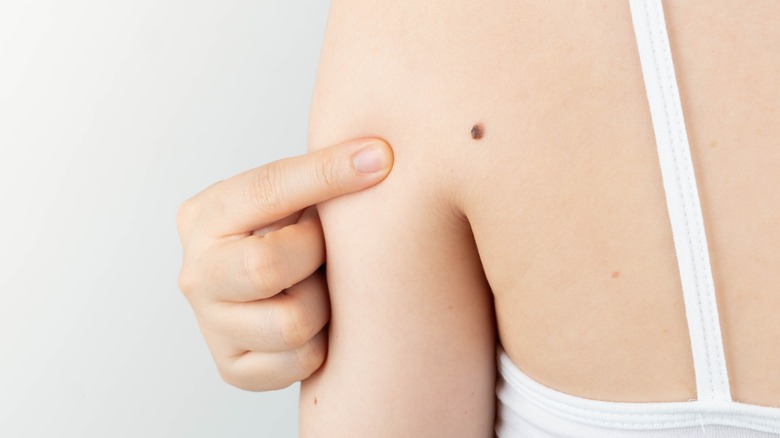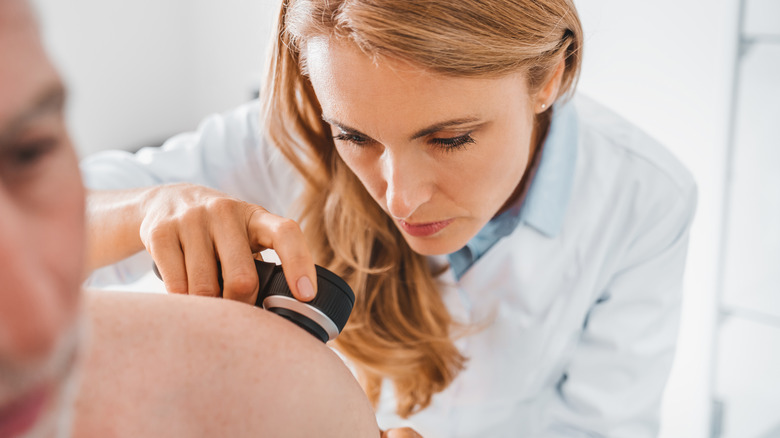How To Self-Examine Your Skin For Cancer
As skin cancer is the most prevalent form of cancer across the country (via U.S. Centers for Disease Control and Prevention), it is characterized by abnormal skin cell growth, reports the Mayo Clinic. Various factors can increase one's chances of developing skin cancer, such as excessive time spent in the sun, use of tanning beds, living in sunny, high-altitude environments, or having a personal or family medical history of skin cancer. Those with compromised immunity, lighter skin tones, moles, or a history of sunburns may also be at higher risk.
The Skin Cancer Foundation reports that early detection and treatment of skin cancer can be life-saving, which is why health professionals encourage regular self-exams. The American Cancer Society suggests doing so once a month, and emphasizes the importance of being thorough in your examination. You'll want to be on the lookout for any changes or the development of new spots on your skin, reports the American Academy of Dermatology Association (AAD). Start by facing a full-length mirror in a room with bright lighting. Give both your front and backside a look-over in the mirror, including your right and left sides with arms above your head. With bent elbows, thoroughly inspect your underarms, forearms, and palms of your hands. Don't forget to check your face, neck, ears, underneath the breasts, fingernails, and between each finger, notes the American Cancer Society.
When to see your doctor after a self-exam
You can now move to a seated position where you'll examine your shins, thighs, tops of your feet, between each toe, and underneath your toenails (per American Cancer Society). You'll also want to inspect the backsides of your legs and feet, as well as the undersides of your feet (via AAD). The American Cancer Society adds that using a hand mirror can help you get a better view of these areas. Next, use your hand mirror to look at the backside of your neck and scalp (per AAD). To be thorough, carefully separate sections of your hair as you make your way across your scalp. Lastly, use the hand mirror to look at the buttocks, genital region, upper and lower back, and behind your ears, notes the American Cancer Society.
So when is the optimal time to conduct a self-examination of our skin? The American Cancer Society suggests doing so following a shower or bath. In the event that you notice the development of something new or a change in shape, size, or color to any pre-existing bumps or spots, be sure to consult with your physician, who can test for the presence of cancer cells.


